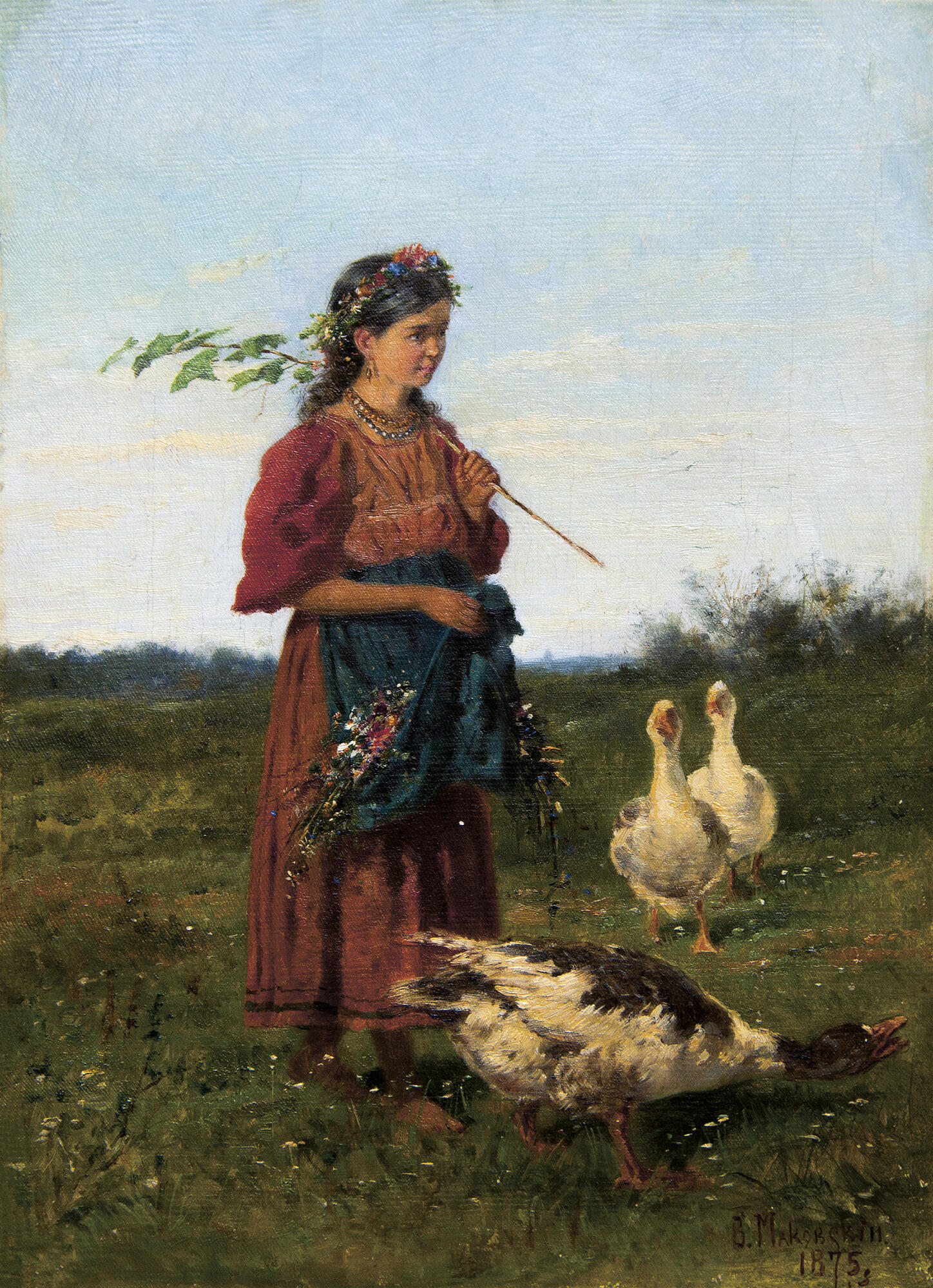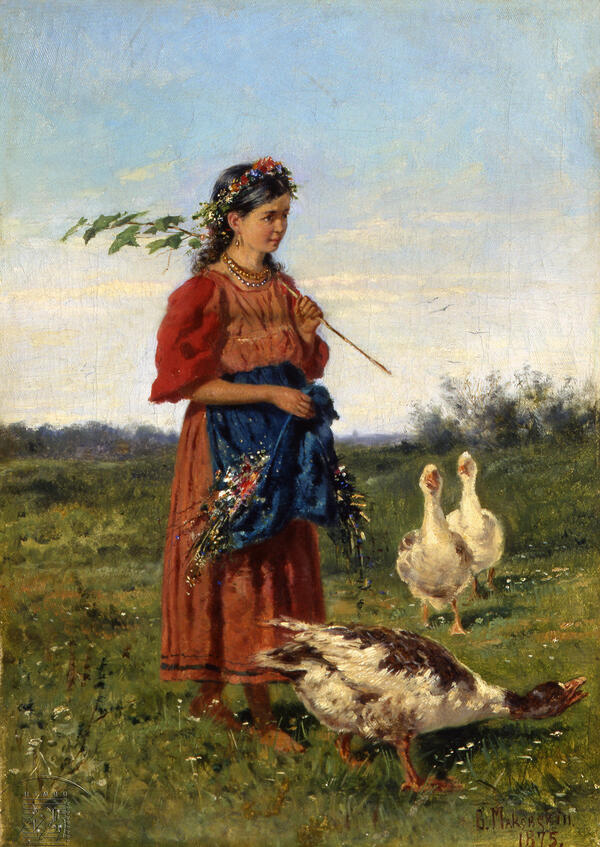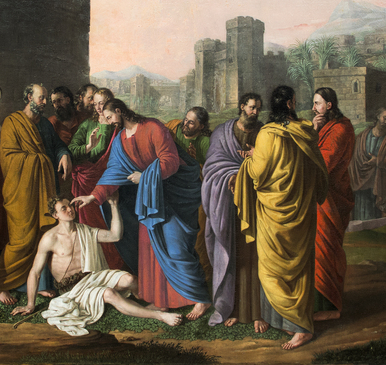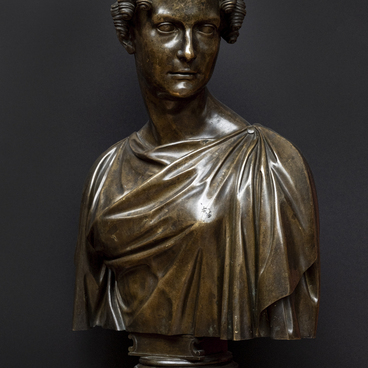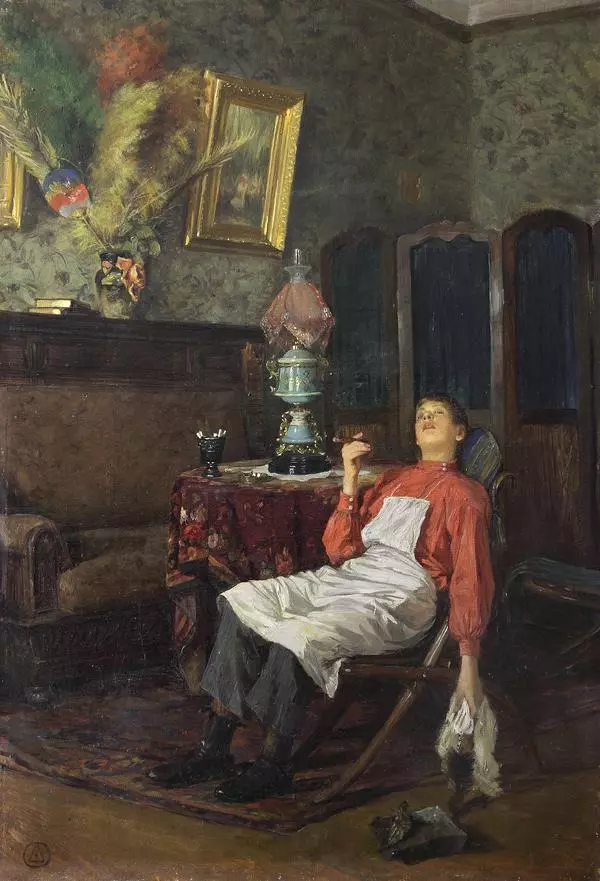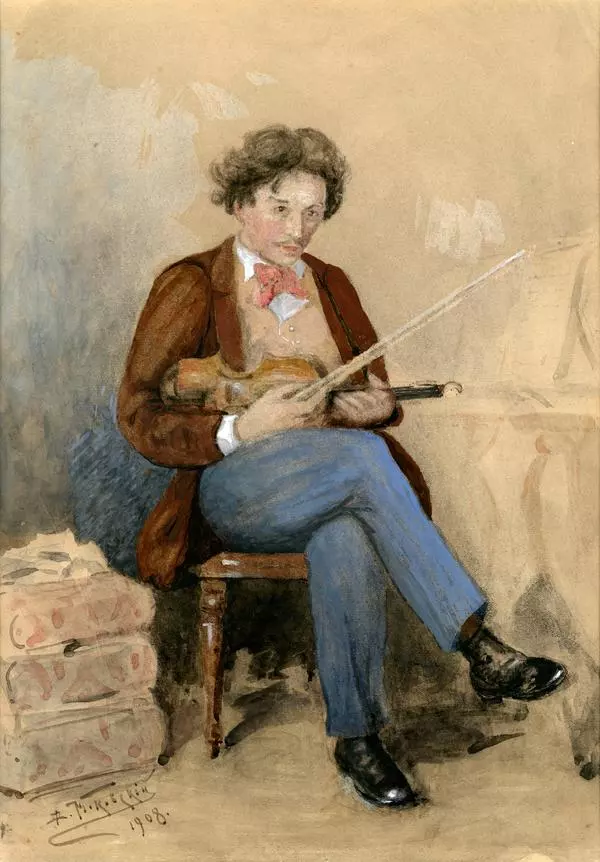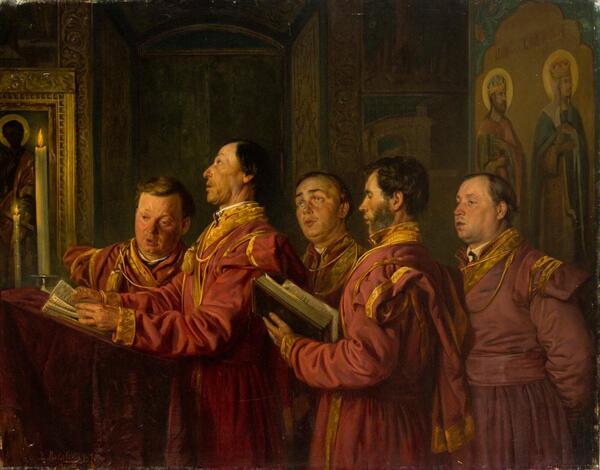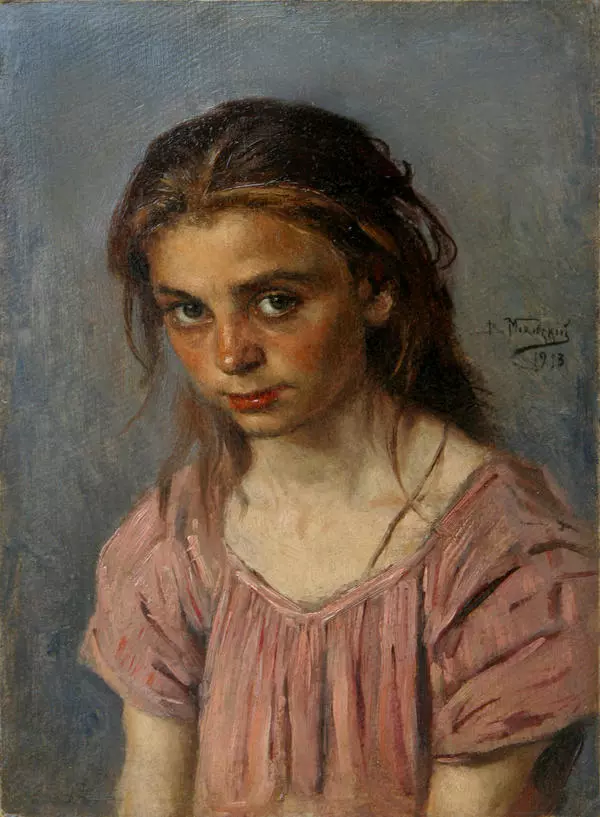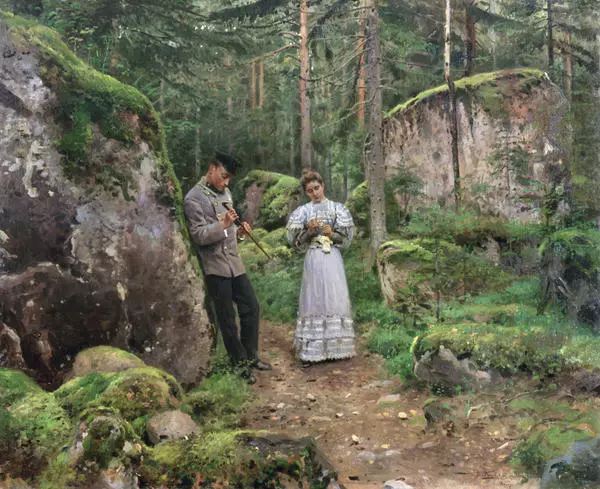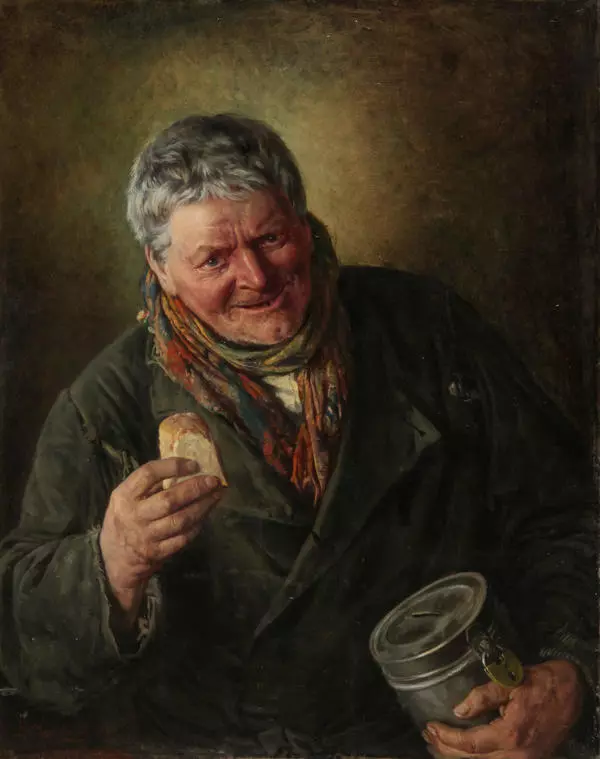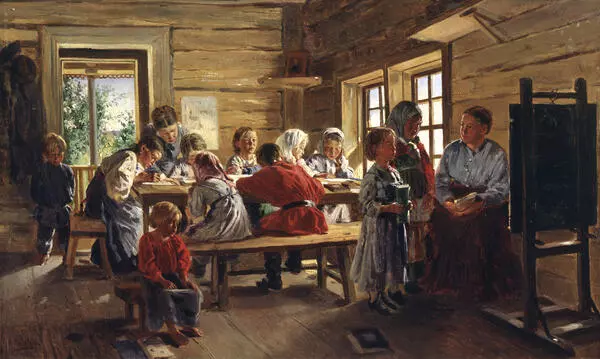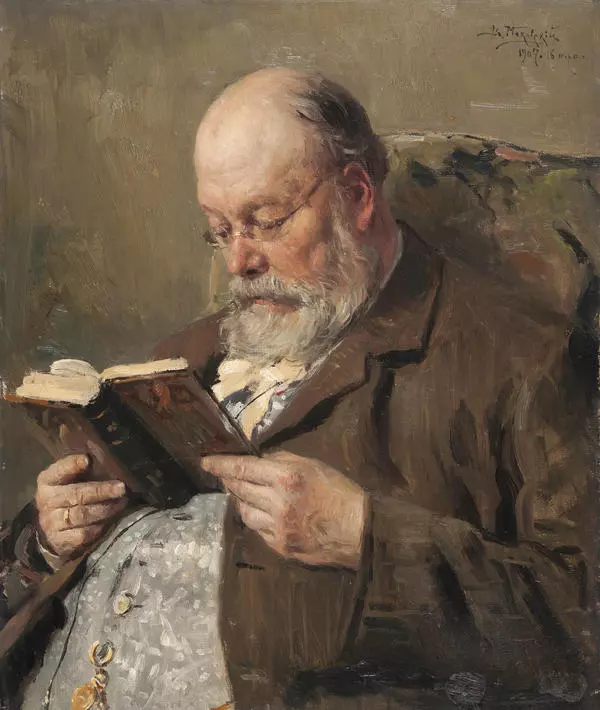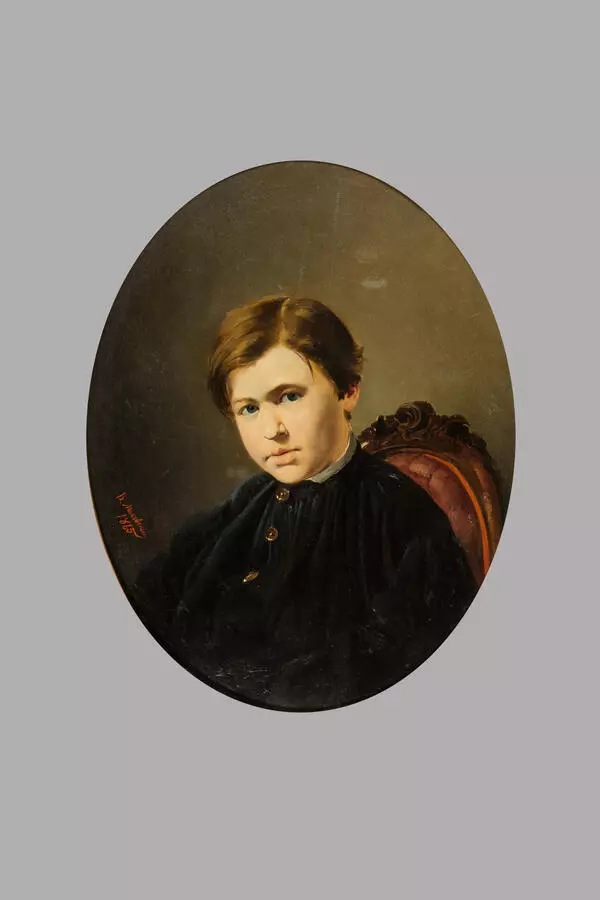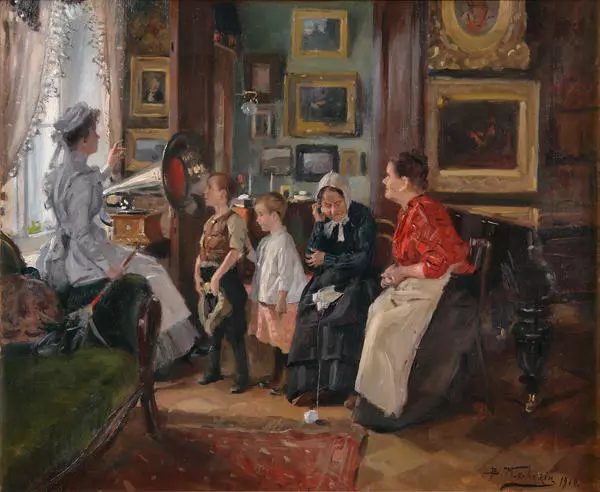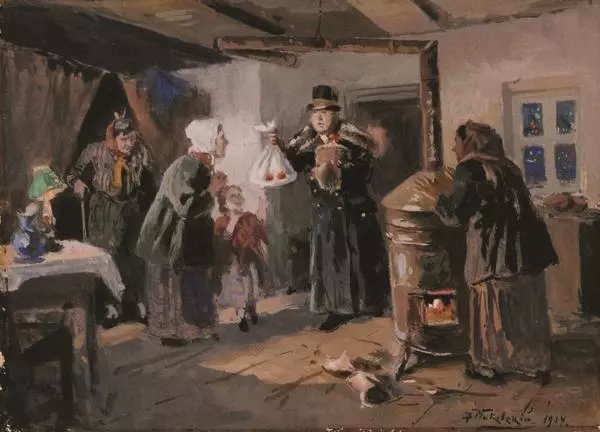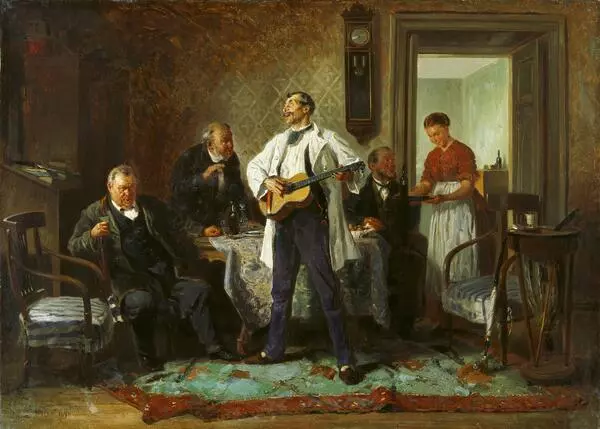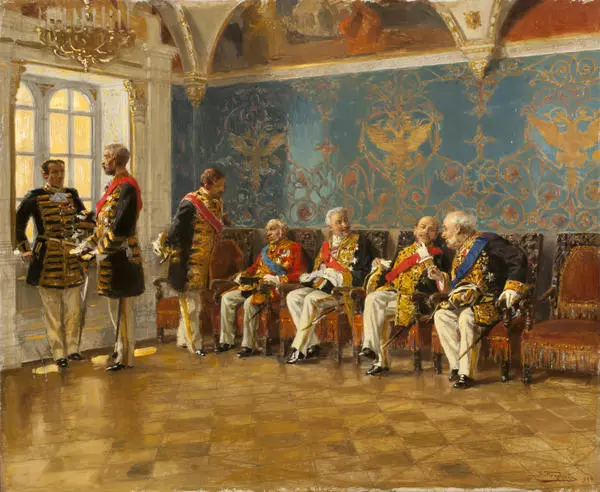The small painting “Girl with Geese in the Field” by Vladimir Makovsky from the Nizhny Tagil Museum of Fine Arts represents the type of art intended to appreciate ordinary people and be appreciated by them.
The 1875 “Girl with Geese in the Field” belongs to a series of life-affirming paintings depicting peasant children. Putting all his love and affection into the children’s images, the artist sought to discover beauty in the everyday life of ordinary people and celebrate the unique poetry of little things, which emphasizes the idyllic tendencies in his work. The image of the young girl was created as a portrait, even if a slightly idealized one. The imagery and blissful, lyrical mood of this painting echo the style of portraits by Vasily Andreyevich Tropinin, the first mentor of Vladimir Egorovich Makovsky.
This painting also shows the evolution of the artist’s creative method — from a reserved to a free manner, from a detailed storyline to artistic expression, and from a “rigid” arrangement of hues in figures and objects to color unity and emotional freedom. The scene from the life of peasant children is simple and natural. However, the image was created in the artist’s imagination rather than merely copied from nature, unlike the paintings of artists who portrayed ordinary life in the 1850s–1860s.
In 1872, Vladimir Makovsky was accepted into the
Society of Traveling Art Exhibitions. He became one of the most consistent
followers of this movement. The artist worked productively and contributed new
paintings to each new traveling exhibition, which was a requirement for all
participants. The painter benefited greatly from his annual trips to Ukraine,
the Volga region, and Crimea. He brought back a lot of memories, studies,
sketches, drawings, and plans for his future paintings. By traveling, the
artist managed to enhance the emotional substance of his works and add a sense
of freshness. Vladimir Makovsky said,
